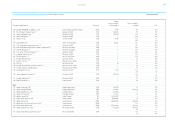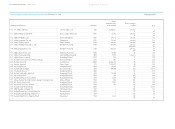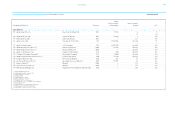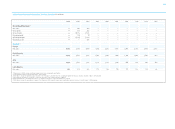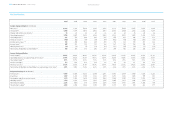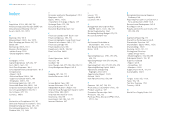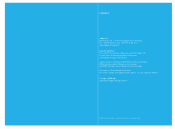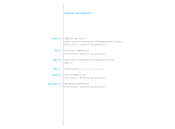Reebok 2006 Annual Report Download - page 201
Download and view the complete annual report
Please find page 201 of the 2006 Reebok annual report below. You can navigate through the pages in the report by either clicking on the pages listed below, or by using the keyword search tool below to find specific information within the annual report.197
Liquidity Ratios I-III
Measures the extent to which a company can quickly liquidate assets to cover short-term
liabilities.
Liquidity I: ((sum of cash + short-term financial assets) / current liabilities) x 100.
Liquidity II: ((sum of cash + short-term financial assets + accounts receivable) / current
liabilities) x 100.
Liquidity III: ((sum of cash + short-term financial assets + accounts receivable + inventories) /
current liabilities) x 100.
Market Capitalization
The total market value of all outstanding shares. It is calculated by multiplying the number of
outstanding shares by the current market price.
Market Risk Premium
The extra return that the overall market or a particular stock must provide over the risk-free
rate to compensate an investor for taking a relatively higher risk.
Market risk premium = market risk – risk-free rate.
Marketing Working Budget
Promotion and communication spending including sponsorship contracts with teams and indi-
vidual athletes, as well as advertising, retail support, events and other communication activi-
ties, but excluding marketing overhead expenses.
Metalwoods
Golf clubs (drivers and fairway woods) which are constructed from steel and/or titanium alloys.
The name also pays homage to persimmon wood, which was originally used in the creation of
these products. This is the largest golf product category in terms of sales.
Minority Interests
Part of net income which is not attributable to the reporting company. Outside ownership in-
terests in subsidiaries that are consolidated with the parent company for financial reporting
purposes.
Modular Football Boot
This football boot concept allows players to customize, adapt and tune their boots to any
weather, any pitch and their very own personal style.
Movable Weight Technology™ (MWT™)
Allows the golfer to adjust the center of gravity in the clubhead by moving two weight car-
tridges. This promotes changes to the shot’s direction, height and distance.
Natural Hedges
An offset of currency risks that occurs naturally as a result of a company’s normal operations,
without the use of derivatives. For example, revenue received in a foreign currency and used to
pay known commitments in the same foreign currency.
Net Borrowings
The portion of gross borrowings not covered by the sum of cash and short-term financial
assets. If a negative figure is shown, this indicates a net cash position.
Net borrowings = short-term borrowings + long-term borrowings – cash – short-term finan-
cial assets.
Net Income from Continuing Operations
A company’s net income excluding the gain or loss from discontinued operations and income
or loss attributable to minority interests. See also Continuing Operations and Discontinued
Operations.
Operating Expenses
Expenses which are not directly attributable to the products or services sold. Operat-
ing expenses are expenses for sales, marketing overheads and marketing working budget,
research and development, general and administrative costs as well as depreciation of non-
production assets.
Operating Lease
Method of leasing assets over periods less than the expected lifetime of those assets. An
operating lease is accounted for by the lessee without showing an asset or a liability on his
balance sheet. Periodic payments are accounted for by the lessee as operating expenses for
the period.
Operating Margin
A measure of a company’s profitability after cost of sales and operating expenses. Best indica-
tor of the profitability of operating activities.
Operating margin = (operating profit / net sales) x 100.
Operating Overheads
Expenses which are not directly attributable to the products or services sold such as costs
for sales, marketing overheads, logistics, research and development, as well as general and
administrative costs.
Operating Profit
Profit from operating activities after cost of sales and operating expenses.
Operating profit = gross profit + royalty and commission income – marketing working budget
– operating overheads.
Operating Working Capital
A company’s short-term disposable capital which is used to finance its day-to-day business.
In comparison to working capital, operating working capital does not include non-operational
items such as cash, financial assets and taxes. See also Working Capital.
Operating working capital = accounts receivable + inventories – accounts payable.


